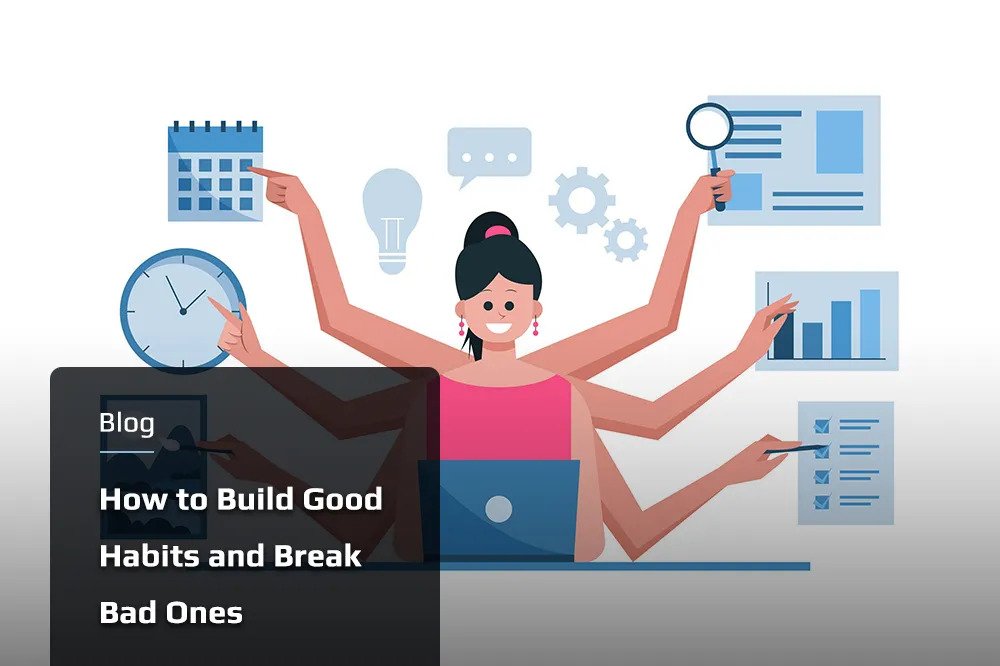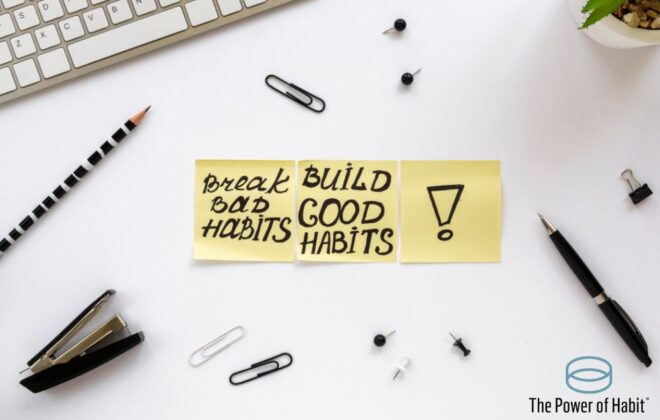
How to Break Bad Habits and Become the Person You Want to Be

Article Content
Overview
In the intricate tapestry of our lives, habits play an often underestimated but profoundly influential role. From the moment we wake up to how we navigate our daily routines, habits dictate much of our behavior. But what are habits, and how can we use their power? This article delves into the science of habit formation, providing insights into building positive habits and breaking detrimental ones that hinder personal growth. As Charles Duhigg eloquently describes in his book “The Power of Habit,” habits are personal and societal forces that shape individuals and organizations.
The Science of Habits
At the heart of habit formation lies the habit loop – a simple yet powerful concept composed of three stages: cue, routine, and reward. This loop becomes ingrained in our neurological pathways, making habits almost automatic. The brain’s reward system, fueled by the neurotransmitter dopamine, reinforces these pathways, making the behavior more likely to be repeated.
Building Good Habits
• Choosing the Right Habits – The first step in building Effective Habits is selecting the right ones to focus on. This involves identifying your personal goals and values. For instance, if you aspire to lead a healthier lifestyle, adopting regular exercise or mindful eating would benefit you. Remember, starting small is key. Embracing the principle of micro-habits allows you to create manageable changes that are more likely to stick.
• Setting Clear and Achievable Goals – Effective habit-building requires clear and achievable goals. Specific, measurable, and time-bound objectives provide a roadmap for your journey. Breaking these goals into smaller, actionable steps makes them less overwhelming and gives you a sense of accomplishment as you complete each step.
• Creating a Conducive Environment – Your environment plays a significant role in habit development. Make the desired behaviors easy and visible. If you’re aiming to read more, place books in visible locations. Conversely, reduce the friction for habits you want to adopt. Consider placing your phone in a different room during specific hours to reduce screen time.
• Utilizing Positive Reinforcement – Positive reinforcement is a powerful tool in habit-building. Celebrate small wins and milestones along the way. These celebrations don’t have to be grand; they can be as simple as treating yourself to a favorite snack after a workout. Tailor the rewards to align with the habit, reinforcing the positive behavior.
• Consistency Is Key – Consistency is the bedrock of habit formation. Establishing a routine helps solidify the habit loop in your brain. While hurdles and dips in motivation are inevitable, persevering through these challenges separates successful habit builders from those who falter. Remind yourself of the long-term benefits and stay committed.
Breaking Bad Habits
• Identifying Triggers and Cues – Breaking bad habits starts with identifying triggers and cues. These are the situations or emotions that prompt the habit. External triggers like stress or boredom and internal triggers like negative thoughts can create a chain reaction leading to unwanted behavior.
• Disrupting the Habit Loop – To break a bad habit, you need to disrupt the habit loop. Replace the routine with a healthier alternative. For example, if you’re trying to quit a smoking habit, replace the act of smoking with chewing gum or deep breathing exercises. Simultaneously, identify alternative rewards that satisfy the same need as the bad habit, preventing dopamine withdrawal.
• Practicing Mindfulness and Self-Awareness – Mindfulness plays a pivotal role in habit change. It involves becoming fully present and aware of your actions and feelings. By practicing mindfulness, you can gain insight into the underlying reasons for your bad habits. This awareness allows you to respond to triggers more thoughtfully, breaking the automatic cycle.
• Gradual Reduction and Replacement – Cold turkey approaches often backfire when breaking bad habits. Instead, consider the principle of gradual reduction and replacement. Decrease the frequency or intensity of the habit over time while simultaneously introducing positive behaviors. Over time, the bad habit loses its grip as the new, healthier behavior occurs.
• Seeking Support and Accountability – Breaking bad habits is rarely a solo endeavor. Enlist the support of friends, family, or support groups. Sharing your goals and progress with others creates a sense of accountability and encourages you during challenging moments. Professional help, such as therapy, can provide valuable guidance for deeply ingrained habits.
• Reinforcing Good Habits Over Time – Building good habits isn’t a one-time achievement; it’s an ongoing process. Consistently reinforce these habits to ensure they become integral to your lifestyle. The more you practice a behavior, the stronger its neurological pathway becomes, making it easier to maintain.
• Continuously Reassessing and Adapting Habits – As your life evolves, so do your priorities and circumstances. Regularly reassess your habits to ensure they align with your current goals. Be willing to adapt and introduce new habits to contribute to your growth.
• Exploring New Habits for Personal Growth – Habit-building isn’t limited to overcoming negative behaviors. Embrace the opportunity to explore new habits that contribute to your personal growth. Whether learning a musical instrument, practicing a new language, or developing a creative skill, the habit-building principles remain the same.
Conclusion
Habits are the building blocks of our lives, shaping our destinies in ways we might not fully comprehend. Armed with the knowledge of habit formation, we hold the power to build good habits that propel us toward success and break bad ones that hinder our potential.
As Charles Duhigg eloquently describes in his book “The Power of Habit,” habits are personal and societal forces that shape individuals and organizations. Remember, habit change requires dedication, self-awareness, and a willingness to embrace the journey of self-improvement. As you embark on this transformative path, know that each small step brings you closer to a better version of yourself.
Related Posts





